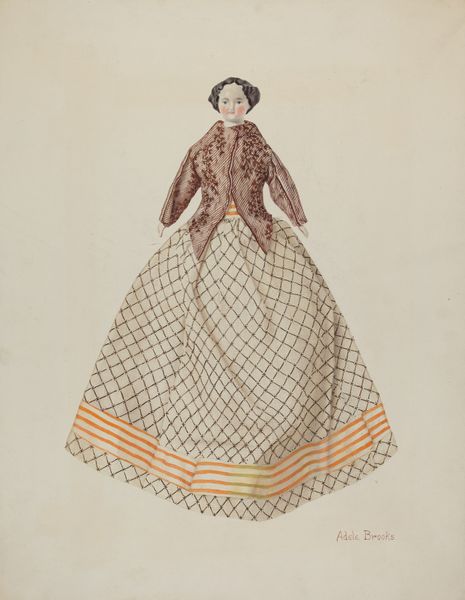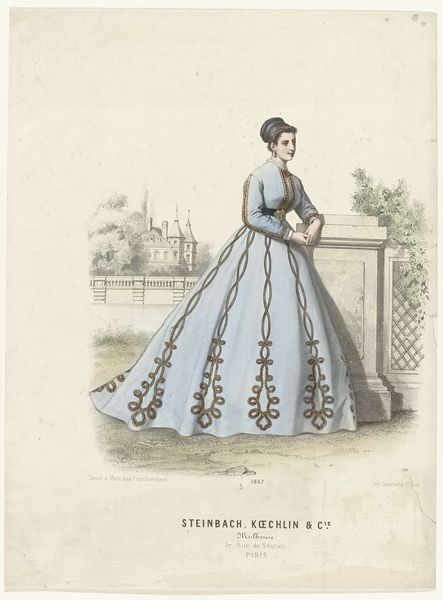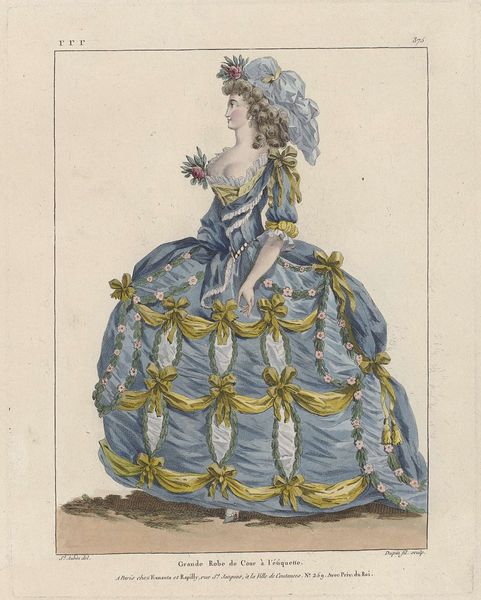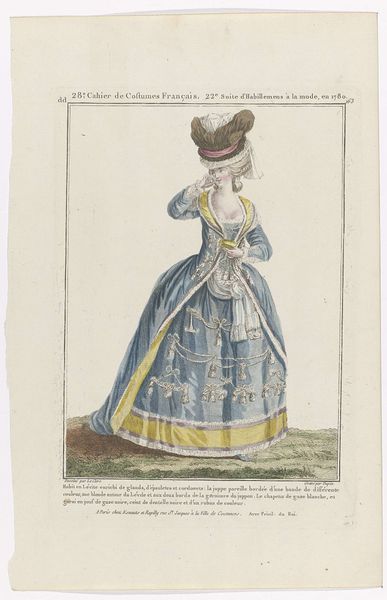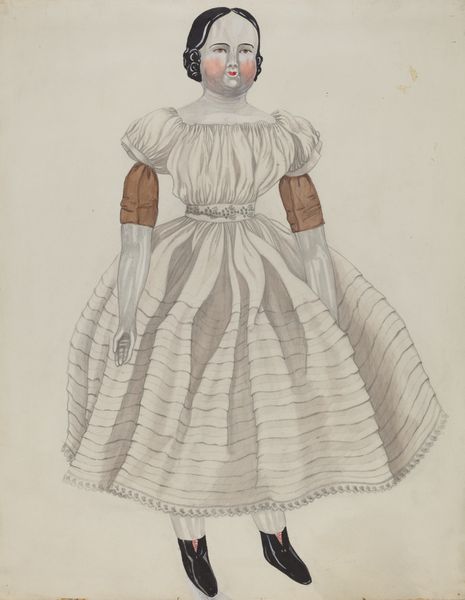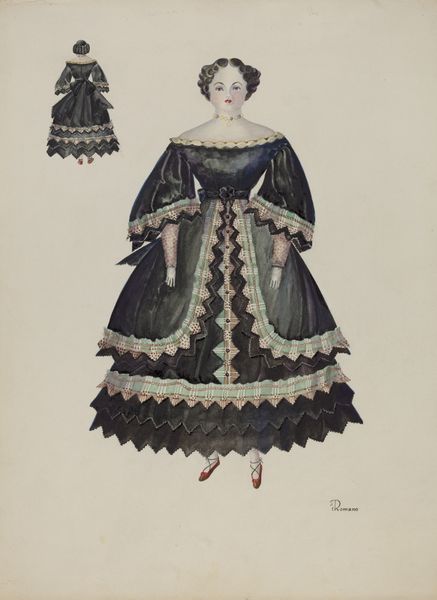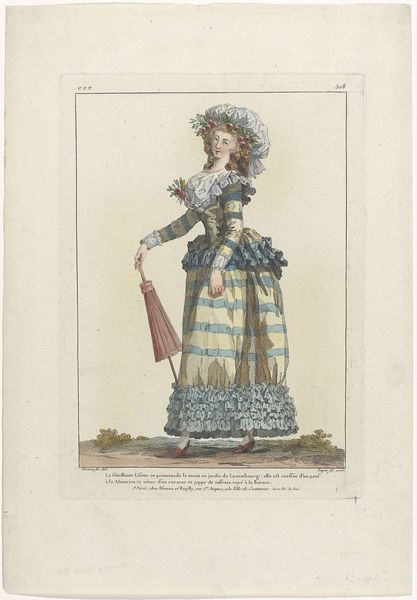
Magazine of Female Fashions of London and Paris. The dress of the Princess Augusta, on the Kings birth day June 4 1799 1799
0:00
0:00
print, watercolor, engraving
#
portrait
#
neoclacissism
# print
#
watercolor
#
watercolour illustration
#
history-painting
#
engraving
Dimensions: height 213 mm, width 130 mm
Copyright: Rijks Museum: Open Domain
Curator: This watercolor and engraving print, dating from 1799, presents Princess Augusta's attire worn at King George III's birthday celebration. The piece is titled, "Magazine of Female Fashions of London and Paris. The dress of the Princess Augusta, on the Kings birth day June 4 1799." Editor: Visually, my immediate impression is of confinement. Her dress is like a gilded cage, trapping her within societal expectations. The pastels create an ethereal mood that seems fragile. Curator: That's interesting. Let's consider the symbolism inherent in the garment itself. Neoclassical fashion often emphasized a return to "natural" forms, inspired by Greek drapery, yet look at this silhouette! Editor: Precisely. While neoclassical ideals pushed for simplicity, there is still clear class performance occurring. The lace trim and feather detail are clear symbols of royal status. A light blue carries Marian symbolism, hinting at idealized feminine virtues expected of a royal woman at the time. Curator: And remember, Princess Augusta wasn't merely wearing clothing; she was performing a specific type of femininity expected of royal women. As such, the image promotes ideals linked to the social hierarchies that would dictate opportunities for men and women of different classes, as well as what behaviors and character traits should be pursued by each. Editor: Note, also, how the feather—a classic symbol of status—almost mocks freedom of expression, weighed down as it is by social constraints. The near absence of other colors strengthens the visual weight of those pale blue patterns. Curator: It certainly forces a concentrated look. It’s important to examine how clothing in portraiture reinforces existing power structures. Also the title seems to suggest that these representations were to be models of feminine style for anyone, which suggests something of a fashion democracy perhaps enabled by the rise of consumerism? Editor: Possibly. Through these lenses, the princess is a symbol of empire and expectation more than an individual. The artist reduces her to pure cultural artifact, for our analysis, so many years later. Curator: Agreed. Reflecting on this artwork together helps us question the roles assigned throughout history and, perhaps, to examine contemporary expressions of gender and power dynamics with greater insight. Editor: Yes, deciphering such visual codes from the past empowers us to deconstruct parallel structures visible in today’s world.
Comments
No comments
Be the first to comment and join the conversation on the ultimate creative platform.
